IN PICTURES: Refurbishing the Memorial Chamber’s stained glass

In February 2019, the Senate moved to the Senate of Canada Building, a former train station built in 1912. The Senate will occupy this temporary location while Parliament’s Centre Block — the Senate’s permanent home — is rehabilitated.
Although Centre Block is shuttered for rehabilitation work, Canadians can still experience its art and architecture through the Senate’s immersive virtual tour.
The Memorial Chamber is one of Canada’s most sacred spaces. It honours Canada’s war dead and holds the Books of Remembrance in which their names are recorded.
Inside the chamber, elaborate stained-glass windows filter and colour the daylight. The windows — created by artist and First World War veteran Frank S.J. Hollister — show scenes of war and peace, from the call to arms to the remembrance of the fallen.
Expert conservators from Traditional Glassworks have been refurbishing the windows, which were installed in 1927. Removed largely for their own protection while Centre Block is rehabilitated, they were also due for some conservation work.
“They’re terrific windows to start with,” said principal Mark Thompson. “They’re very well designed, not only for their beauty and their meaning, but for their structure. The glass is all very good quality.”
Thanks in part to the excellent original craftsmanship, Mr. Thompson said his team’s task — while requiring a deft touch and considerable knowhow — was relatively straightforward.
“More like maintenance and conservation,” he said.
Take a look at what his team has been doing to preserve these works of art for future generations of Canadians.
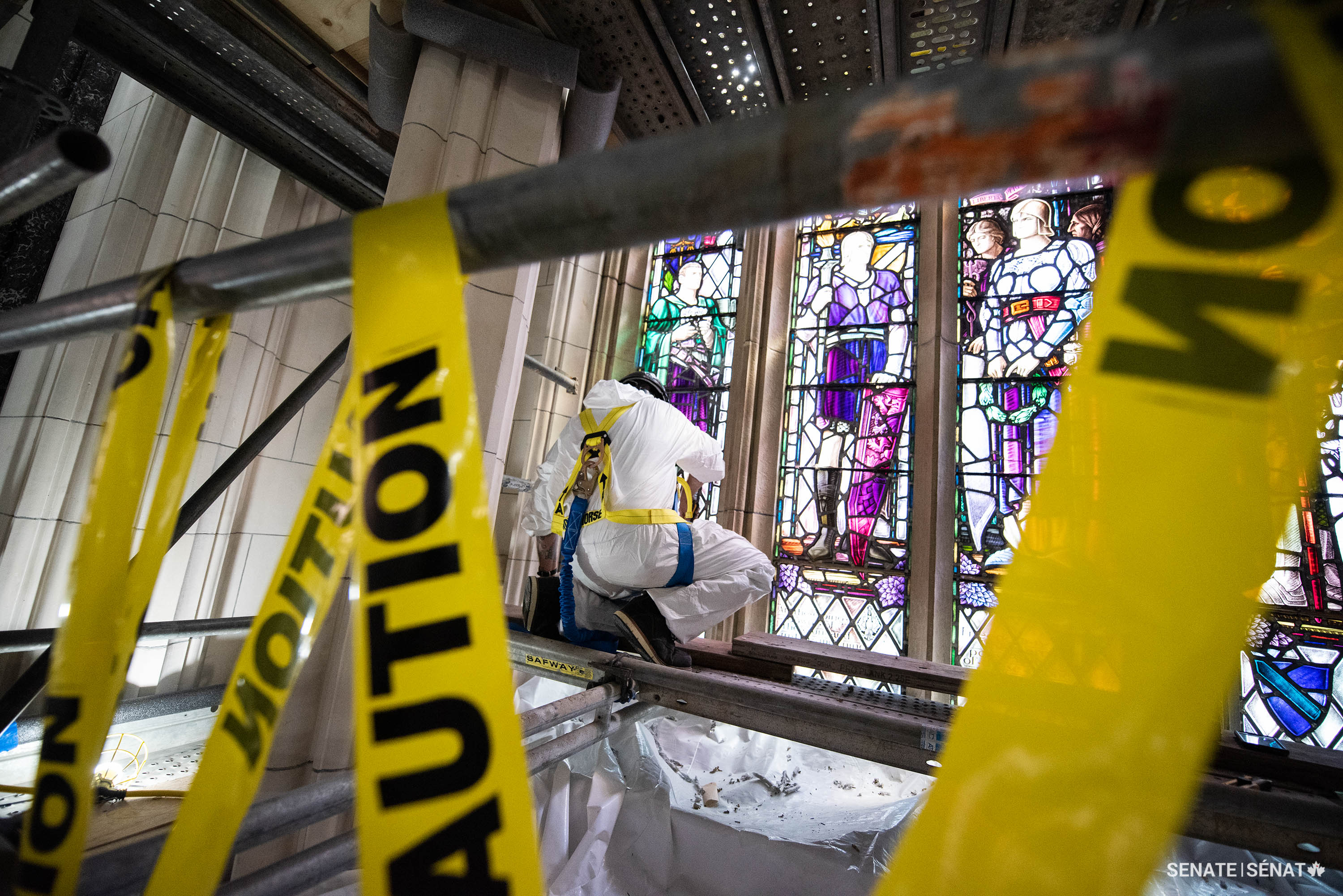
Workers delicately remove a section of The Assembly of Remembrance from the Memorial Chamber. The windows are fitted into grooves in the stone called reglets. Traditional Glassworks principal Mark Thompson said some of the lead that frames the panels had become corroded and had to be severed before the panels could be removed.

The exquisitely detailed panels from The Dawn of Peace are replaced with plain glass so artist Frank S.J. Hollister’s creations can be refurbished by Mr. Thompson and his team of top conservators.
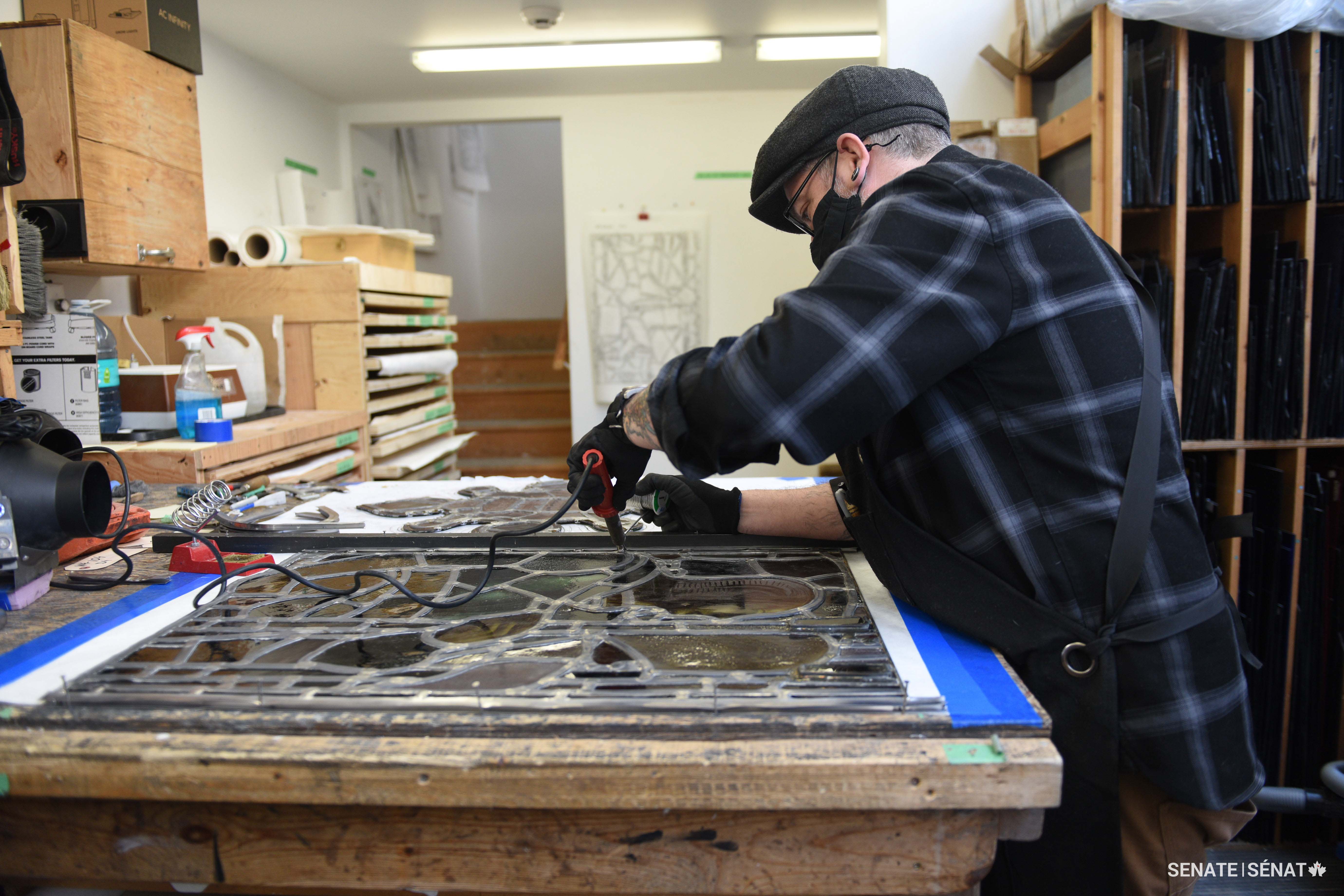
Senior conservator John Martin solders a new edge lead to replace lead that had become corroded by the mortar used to help hold the window in place.
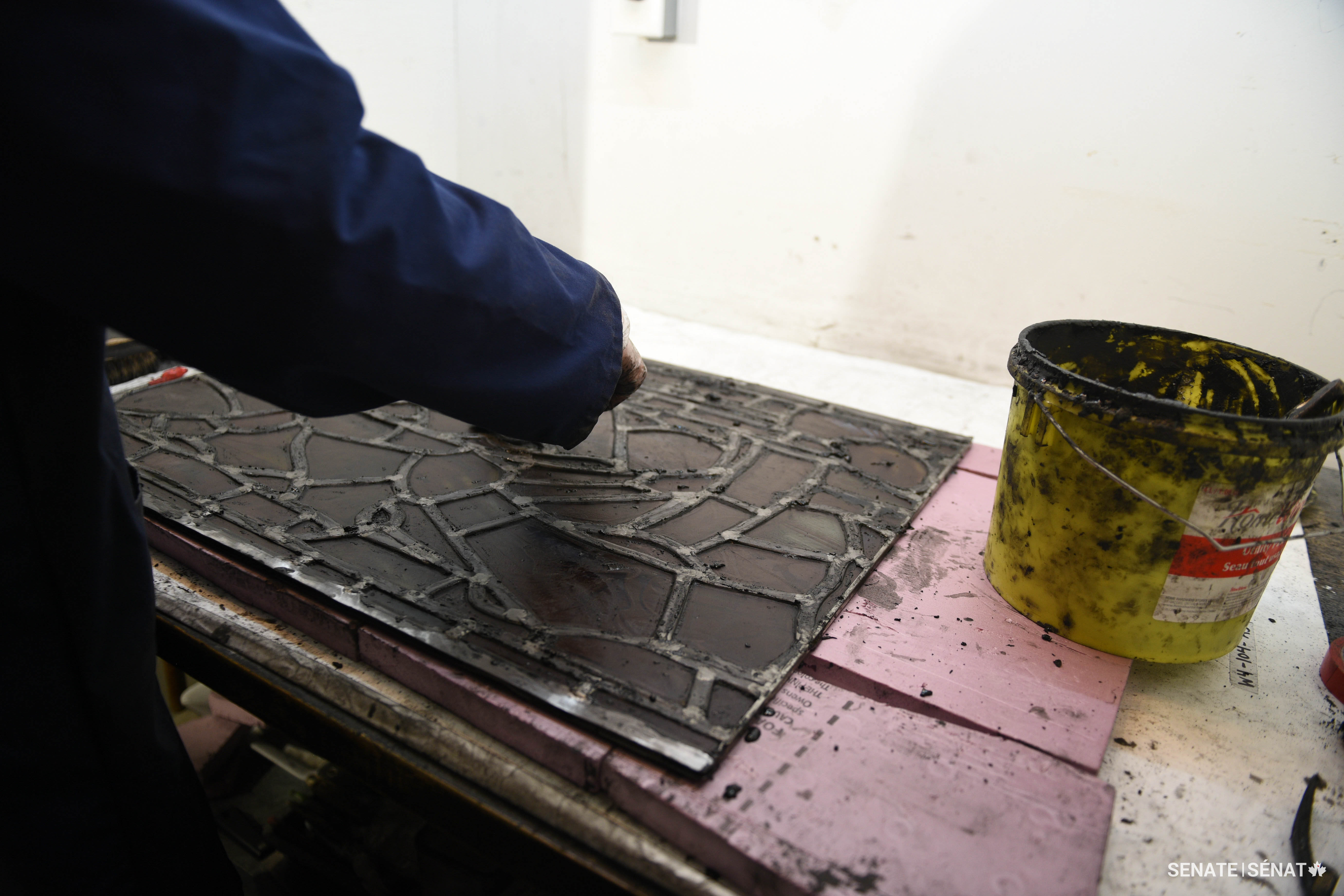
A special glazing compound makes this window airtight and waterproof, and protects the lead from oxidizing.
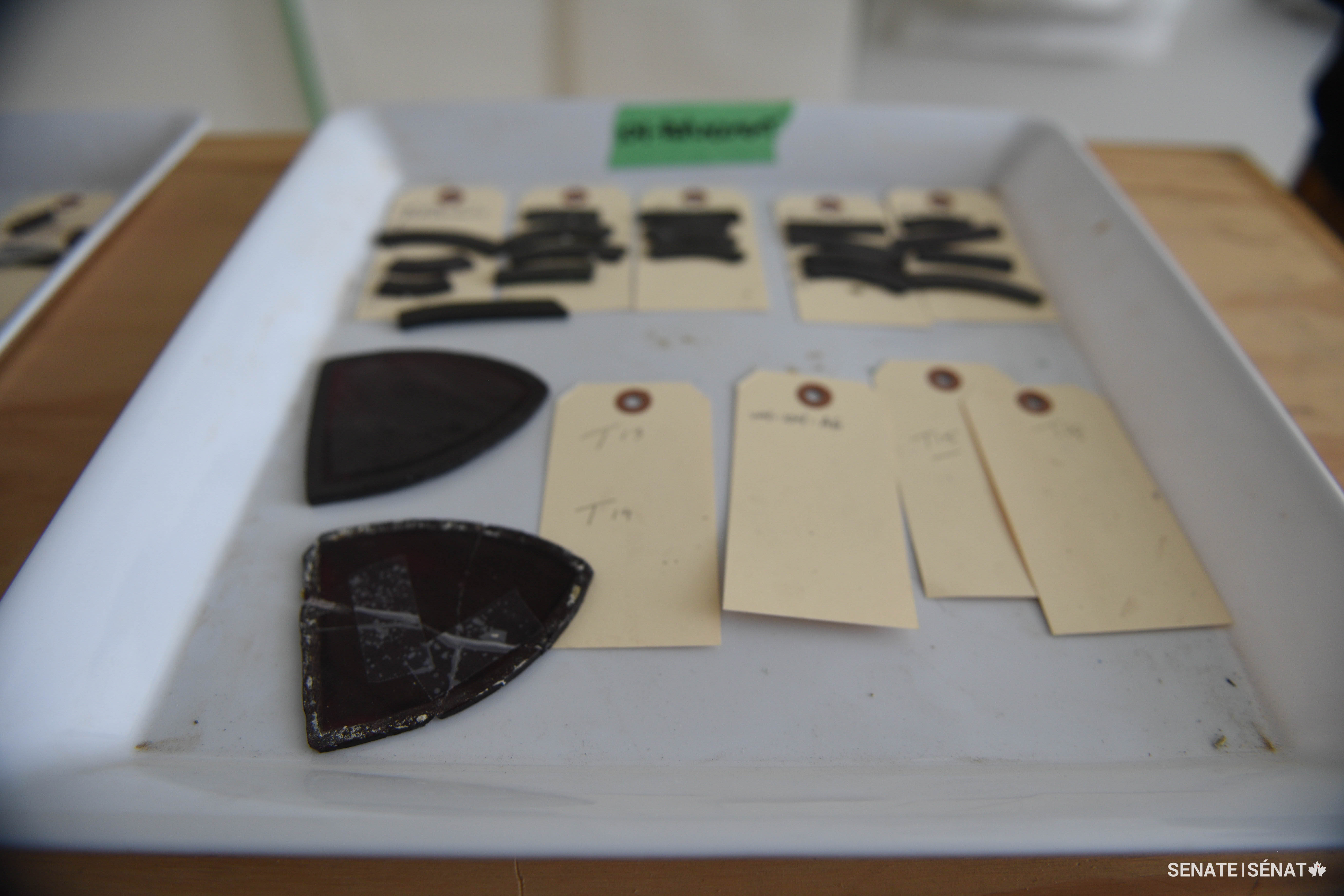
Despite the quality craftsmanship and the enormous care taken to preserve these fragile pieces of history, conservators found the occasional cracked piece of glass. Mr. Thompson said they used Scotch tape to hold this piece of glass together and preserve its shape so his team could cut a replacement piece from reserves of old stained glass they keep on hand. “Broken glass is always disturbing to look at,” he said.
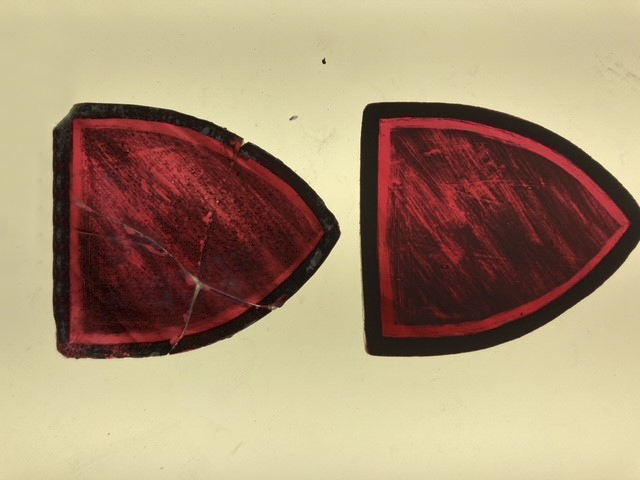
Mr. Thompson’s team found a perfect colour match for the cracked piece in some handmade English glass manufactured by Hartley Wood and Co. in 1940. They recreated the textured pattern on the glass by using “vitreous grisaille paint” — paint that contains ground glass — and firing the piece in a 675 oC kiln to permanently melt the paint into the glass. That’s hotter than a pizza oven. (Photo credit: Traditional Glassworks)
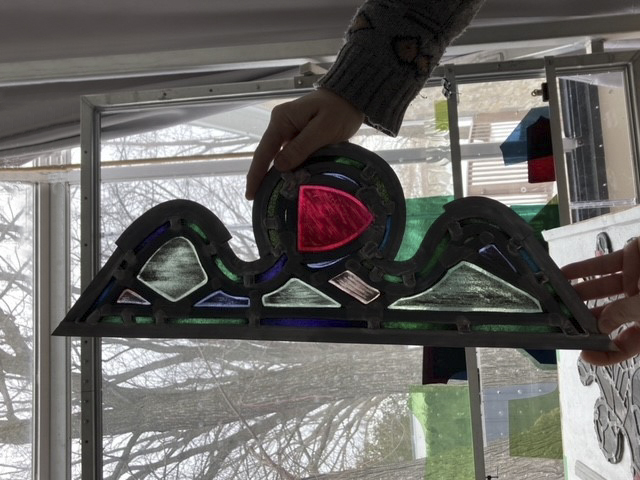
The new glass piece is snug in its new home, ready for its eventual return to the Memorial Chamber. (Photo credit: Traditional Glassworks)


